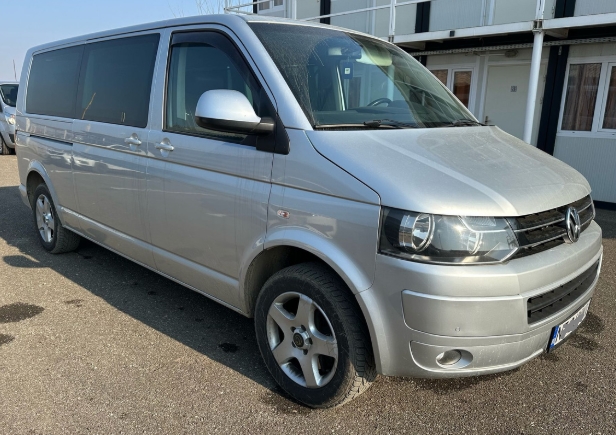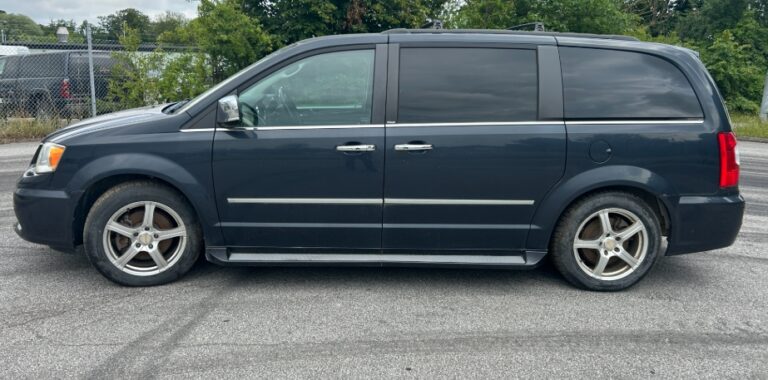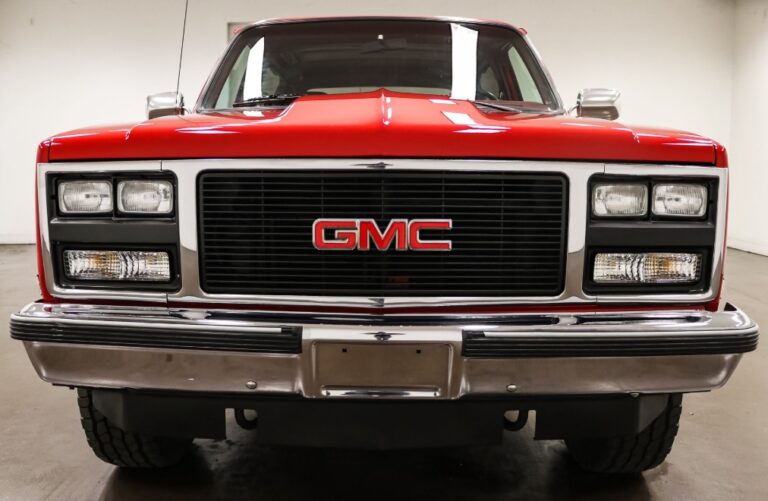The Unmistakable Icon of Versatility: A Factual History of the Volkswagen Multivan
For over three decades, the Volkswagen Multivan has been more than just a vehicle; it has been a versatile companion for families, a mobile office for executives, and a dependable chariot for adventurers. It carved a unique niche between the utilitarian panel van and the conventional family car, offering a blend of space, comfort, and adaptability that few rivals could match. Its evolution from a well-appointed van into a sophisticated, car-based MPV is a story of clever engineering, understanding customer needs, and consistently redefining a segment it largely created. This is the factual history of the Volkswagen Multivan, generation by generation.
The Progenitor: The T3 Caravelle Carat (1985-1992)
While the first vehicle to officially bear the “Multivan” name was the T4, its conceptual DNA was forged in the final years of the T3 generation. Volkswagen, recognising a demand for a more luxurious and passenger-focused version of its venerable rear-engined Transporter, introduced the Caravelle Carat in 1985. This was no simple van with windows. The Carat was a statement, featuring alloy wheels, power steering, central locking, a high-end sound system, and most importantly, a revolutionary interior. It boasted a folding table, swivelling captain’s chairs in the middle row, and plush velour upholstery. It was a business lounge on wheels, laying the crucial groundwork for a dedicated model that would focus entirely on this principle of flexible, comfortable passenger transport.
The First Generation: T4 Multivan (1990-2003)
The launch of the T4 platform in 1990 was a seismic shift for Volkswagen’s commercial vehicle line. The charming but dated rear-engine, rear-wheel-drive layout of the T1, T2, and T3 was retired in favor of a modern front-engine, front-wheel-drive configuration. This single change was the key that unlocked the true potential of the Multivan. It allowed for a completely flat floor from front to back, lower loading heights, and vastly improved driving dynamics and crash safety.
The T4 was the first to be officially christened the “Multivan.” It took the concept of the T3 Carat and perfected it. The core of its appeal was the ingenious interior layout: two individual, rear-facing seats in the middle row (often swivelling) and a three-seater rear bench. This bench wasn’t just for sitting; it cleverly folded flat to create a spacious double bed. A collapsible table, which could be stowed away when not in use, completed the package. Suddenly, a single vehicle could be a seven-seater school bus on Monday, a mobile meeting room on Wednesday, and a basic camper for a weekend getaway on Friday.
.
THIS is GOOD stuff if your car is in need:

.
Key Models and Trim Levels:
- Multivan Classic: The standard model, offering the core flexible seating configuration and durable, family-friendly materials.
- Multivan Allstar (from 1993): A popular special edition, often featuring distinctive upholstery, alloy wheels, and a more vibrant color palette.
- Multivan Atlantis (from 1999): A high-spec model with metallic paint, climate control, and premium interior trim, pushing the Multivan further into the luxury market.
- Multivan Last Edition (2003): A final, well-equipped run-out model to celebrate the end of the T4’s successful production run.
A significant update occurred in 1996. To accommodate larger engines like the powerful 2.8-litre VR6 petrol and the torquey 2.5-litre TDI diesel, the front end of the Multivan was extended, creating what enthusiasts call the “long nose” T4. This facelift also brought revised headlights and bumpers, giving the vehicle a more modern and assertive look that carried it through to the end of its production in 2003.
The Second Generation: T5 Multivan (2003-2015)
The T5, launched in 2003, represented a quantum leap in refinement and technology. While retaining the T4’s successful formula, it elevated the entire experience. The build quality was more robust, the materials more premium, and the driving experience significantly more car-like. The gear lever was moved from the floor to a high, ergonomic position on the dashboard, a small change that dramatically improved cabin comfort and feel.
The most significant interior innovation was the introduction of a floor-mounted rail system. This replaced the fixed mounting points of the T4, allowing the individual seats and rear bench to be slid forwards and backwards, repositioned, or removed entirely with much greater ease. This provided an almost limitless number of interior configurations, solidifying the Multivan’s claim as the master of adaptability.
Key Models and Trim Levels:
- Startline: The entry-level model, offering the core functionality but with more basic trim and fewer standard features.
- Comfortline: The heart of the range, balancing a high level of standard equipment (including climate control, better upholstery, and more convenience features) with value.
- Highline: The luxury flagship, featuring leather/Alcantara seats, chrome exterior accents, automatic climate control, premium sound systems, and often the most powerful engines as standard.
- PanAmericana: A special edition geared towards adventure, featuring a raised ride height, rugged plastic body cladding, and often the 4MOTION all-wheel-drive system.
- Business: The pinnacle of luxury, configured as a high-end executive shuttle with opulent leather, wood trim, and advanced multimedia and connectivity features.
In 2009, the T5 received a major facelift, often referred to as the T5.1 or T5 GP (Große Produktaufwertung/Great Product-Upgrade). This brought the Multivan’s styling in line with Volkswagen’s contemporary passenger car range, with sharper, angular headlights and a new grille. More importantly, it introduced modern common-rail TDI engines that were quieter and more efficient, and for the first time, the option of Volkswagen’s excellent DSG dual-clutch automatic gearbox.
The Third Generation: T6 Multivan (2015-2021)
Visually an evolution of the T5’s popular shape, the T6 Multivan was a comprehensive technological overhaul. While built on the same fundamental platform, almost every panel was reshaped for a crisper, more modern aesthetic. The real story, however, was on the inside and under the skin.
The T6 was defined by its integration of modern automotive technology. The dashboard was completely redesigned to accommodate new touchscreen infotainment systems with features like Apple CarPlay and Android Auto via Volkswagen’s App-Connect. Safety was also a major focus, with the introduction of a suite of driver-assistance systems, including Adaptive Cruise Control, Front Assist with City Emergency Braking, and a Driver Alert System.
Key Models and Trim Levels:
The trim structure largely followed the T5’s successful formula with Comfortline and Highline models forming the core. Special editions remained a key part of the strategy:
- Generation SIX: A launch edition based on the Comfortline with retro-inspired two-tone paint options, special 18-inch “Disc” alloy wheels, and Alcantara trim, all paying homage to the original T1 bus.
- PanAmericana: Continued as the rugged, off-road styled variant.
- Business/Edition: High-end models continued to offer executive-level luxury.
The T6 itself received a significant update in 2019, creating the T6.1 Multivan. This was far more than a simple facelift. It introduced electro-mechanical power steering, which enabled a new generation of active safety features like Lane Assist and Park Assist. The front end was dramatically restyled with a much larger grille. Inside, the T6.1 debuted the fully digital “Virtual Cockpit” and the latest generation of modular infotainment systems (MIB3), ensuring it remained technologically current.
The Fourth Generation: T7 Multivan (2021-Present)
The T7, launched in 2021, marks the most radical transformation in the Multivan’s history. For the first time, the Multivan broke away from its commercial van sibling, the Transporter. While the T6.1 Transporter continues production for commercial duties, the T7 Multivan is an entirely new vehicle based on Volkswagen’s MQB (Modular Transverse Matrix) passenger car platform, the same architecture that underpins the Golf and a host of other VW Group vehicles.
This switch to a car platform has profound implications. The T7 is lower, sleeker, and more aerodynamic, with a driving experience that is now indistinguishable from a large family car or SUV. It also unlocks access to the very latest technology, most notably a plug-in hybrid (PHEV) powertrain, badged as the “eHybrid,” a first for the Multivan line.
The interior has been completely re-thought for even greater flexibility. The heavy rear bench is gone, replaced by lighter, individual seats on the advanced rail system. This makes removing seats and reconfiguring the layout a one-person job. The central table is also a new multi-function design that can slide the full length of the cabin, from between the front seats to the very rear. The dashboard is a minimalist, digital-first environment dominated by screens, and the traditional gear selector is replaced by a small drive-by-wire switch.
Key Models and Trim Levels:
The naming strategy was simplified to align with Volkswagen’s car range:
- Multivan: The entry-level model.
- Life: The mid-range specification, adding more comfort and convenience features.
- Style: The top-tier trim, offering the highest level of luxury, technology, and premium design features.
- Energetic: A launch edition for the eHybrid models.
Legacy and Conclusion
From the pioneering T4 that established the template, through the refined T5 and the tech-savvy T6, to the revolutionary car-based T7, the Volkswagen Multivan has consistently evolved to meet and exceed the demands of modern life. It has successfully navigated the changing automotive landscape, transforming from a cleverly packaged van into a high-tech, hybrid-powered MPV. Yet, through all these changes, its core promise has remained unshaken: to provide the ultimate in flexible, comfortable, and high-quality space for people on the move. The Multivan is not just a part of Volkswagen’s history; it is a rolling testament to the enduring power of a brilliant idea, expertly executed and continually perfected.







